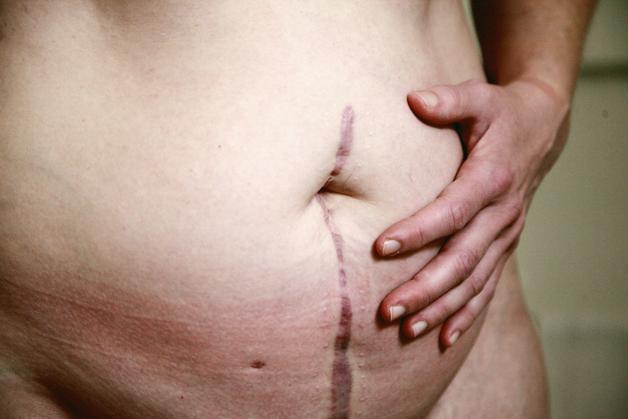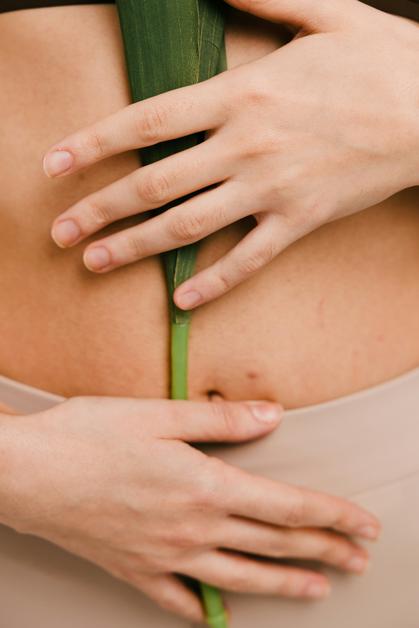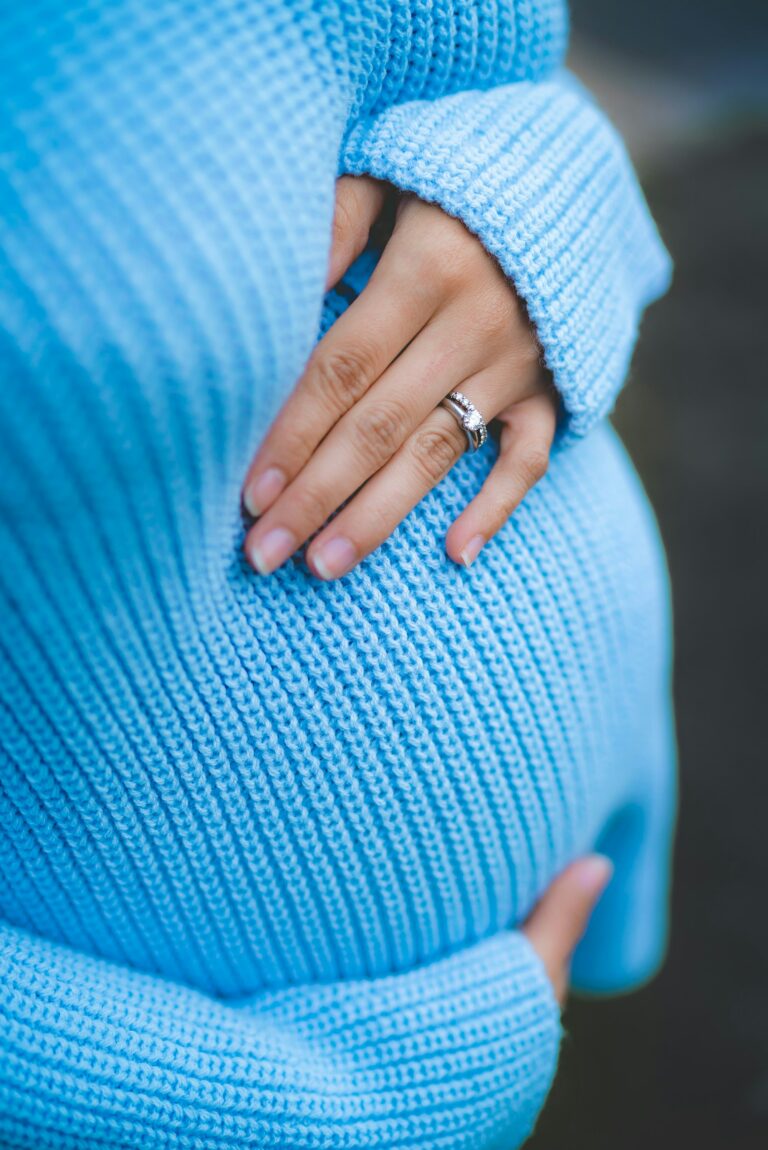Pregnancy often brings a kaleidoscope of emotions—joy, anticipation, a touch of worry, and sometimes, the quiet appearance of pregnancy stretch marks. If you have wondered about those reddish, purplish, or silvery lines making their debut on your growing belly, hips, or thighs, you are absolutely not alone in this feeling. Many parents, regardless of background or body type, notice these streaks as the skin accommodates the rapid changes brought by a developing baby. Queries bubble up naturally: “Can I prevent them? Should I try?” Perhaps you wonder, too, if there’s more to pregnancy stretch marks than meets the eye—something deeper beneath the surface. Exploring these questions means understanding what causes stretch marks, practical ways to care for your skin, scientific insights, and above all, embracing every change with respect and compassion for your body.
Understanding Pregnancy Stretch Marks: What Really Happens Beneath the Skin?
Pregnancy stretch marks—technically known as striae gravidarum—make their presence felt on skin that has been gently stretched beyond its natural limit. Imagine this: the skin’s middle layer, the dermis, packed with networks of collagen and elastin, is not unlike an elastic band that, when pulled too quickly or far, loses its structure. Hormonal shifts—especially surges of cortisol and estrogen—directly influence collagen production, rendering skin less elastic, understandably more prone to these fine, sometimes dramatic streaks.
Where exactly do they settle? The abdomen, for sure, but also the breasts, hips, thighs, even the buttocks—places experiencing the most remarkable transformations. Do all parents experience them? Not necessarily. Genetics offer a silent script, and if a mother or sister developed these marks, your skin may follow a similar pattern. But weight gain—especially if sudden or substantial—also holds the pen in this story.
Notice, too, the transformation in colour: tender pink or purple early on, fading with time to silvery traces, almost whispering the story of growth.
Why Do Pregnancy Stretch Marks Happen? Tightly Spun Science and Gentle Realities
Far more than a matter of luck or discipline, pregnancy stretch marks trace their roots to three main factors:
- Hormonal influences: Elevated cortisol—the “stress hormone”—softens the links between collagen and elastin, potentially making the skin less resilient when stretched. The hormonal cocktail particular to pregnancy rewires the skin’s natural abilities to repair.
- Rapid expansion of tissues: Imagine the skin being asked to grow as quickly as a balloon being inflated. This puts the dermal fibers under immense strain, causing tiny tears where they cannot match the pace.
- Inherited tendencies: Genetics shape not only the tone of your eyes, but also the fundamental stretchiness of your skin. Some skin types, inherently drier or less elastic, prove more susceptible to these changes.
Frequently, these factors overlap—someone may have inherited less elastic skin and experience more dramatic weight changes, which together raise the likelihood of developing pregnancy stretch marks.
Where Are Pregnancy Stretch Marks Most Likely to Appear?
The list is often predictable, though never quite the same for everyone. Most frequently, pregnancy stretch marks settle on the abdomen, as it expands to make space for baby’s growth—red or brownish streaks tracing the natural curves. Yet the breasts often experience significant growth, sometimes as early as the first trimester, and can develop fine marks at the sides or base. Hips, thighs, and buttocks also exhibit these signs, especially with rapid, noticeable shifts in body contours.
Multiple pregnancies or a brisker increase in weight may amplify this process, resulting in a broader distribution or greater number of stretch marks. On rare occasions, even the inner arms may show evidence of these changes.
Red to White: The Evolution of Pregnancy Stretch Marks
Pregnancy stretch marks rarely stay the same. Initially, new marks are red, violet, or even a deep brown (skin tone can shift how they appear), sometimes slightly raised or itchy—this is the acute phase, rich in blood supply and active tissue remodeling. As months go by, these soon fade to soft white or shimmering silver, becoming flat and less noticeable but not vanishing entirely. This process—collagen remodelling, as it’s medically known—is a natural part of skin healing. No matter what is promised by over-the-counter solutions (miracle creams often abound), the intrinsic fibrous structure of stretch marks means they are persistent.
Tackling Prevention: What Can Be Done, and What Science Says
Parents, hear this: absolute prevention of pregnancy stretch marks is not possible, despite wishful thinking or marketing claims. But certain actions genuinely help in supporting skin health and perhaps limiting the number or severity of marks:
- Consistent hydration—simple yet significant. Skin massaged daily with nourishing agents such as shea butter, argan oil, or almond oil tends to be suppler. Avoid products with retinol if pregnant.
- Regular massage—stimulates circulation, allowing hydration to reach deep within the skin’s layers. Even a few minutes each day can be beneficial.
- Gentle exfoliation—once weekly, using a mild scrub, removes dead cells and readies the skin for moisturisers.
- Drinking water—hydrating from within helps retain the skin’s firmness and adaptability.
- Steady, gradual weight gain—align with your health provider’s advice on healthy progression. Sudden ups and downs stress not just the skin, but the entire body.
- Balanced, nutrient-rich diet—vitamin C (essential for collagen), vitamin D, vitamin E (present in nuts, plant oils), vitamin A (carrots and eggs), zinc, protein, and omega fatty acids (from oily fish and seeds) all nourish the skin at the cellular level.
- Mild exercise—walking, swimming, or prenatal yoga gently promote circulation, indirectly boosting skin health.
Start these habits right from the earliest discomfort or tightening—not just once visible pregnancy stretch marks appear. Routine, consistency, and a gentle approach offer the kindest chance for comfort and support.
Spotting Early Signs and Daily Care Rituals
Do you notice a subtle itch around the hips or a patch of tightness across the belly late in the evening? These quiet hints can often precede the first faint lines of pregnancy stretch marks. An immediate response—with moisturizing (think coconut oil or cocoa butter), extra glasses of water, and a relaxing massage—offers both comfort and practical benefit. Make these gestures as ingrained as brushing your teeth or your evening walk.
A word of medical caution: if there is relentless itchiness, or a sudden, rash-like appearance, seek a healthcare practitioner’s wisdom—skin changes in pregnancy can sometimes mask other conditions requiring extra attention.
Differentiating Pregnancy Stretch Marks from Other Skin Changes
Not every new mark or patch on the skin during pregnancy is a stretch mark. Some parents encounter polymorphic eruption of pregnancy (PEP/PUPPP)—a condition that can cause scattered, intensely itchy bumps and hives, distinct from the linear, indented look of pregnancy stretch marks. Stretch marks favor isolation—the linear pattern; PUPPP tends to congregate and may even blister. Notice a sudden, spread-out rash or experience burning? Always check in with a medical professional to clarify the diagnosis and seek appropriate care.
Living With Stretch Marks After Pregnancy: Healing, Fading, and Choices
Once the baby arrives, the story of pregnancy stretch marks evolves rather than ends. The marks will not vanish completely, but their coloring usually fades considerably—reddish streaks melt into faint, silvery valleys, and with time, the skin may feel softer and smoother. Some parents long for restoration, others find acceptance, maybe even pride, in their changing contours—a deeply personal and valid response.
Consistency in skincare—ongoing moisturising and massage—supports natural repair. For those interested in further intervention, several safe medical and cosmetic approaches exist. Each comes with its own set of science, limitations, and timing considerations.
Safe Treatment Options Post-Pregnancy
- Hydration and massage remain pillars, with shea butter, cocoa butter, and coconut oil providing comfort and slight textural improvement.
- Soft exfoliation, like sugar scrubs, can boost skin renewal gently, removing surface dullness.
- Medical procedures:
- Vascular laser therapy (for newer, colored marks): targets underlying blood vessels, stimulating the skin’s own collagen-building machinery.
- Microneedling: small, controlled skin pricks (done professionally) encourage fibroblasts—skin repair cells—to activate, improving even mature, silvery marks.
- Microdermabrasion: gentle mechanical exfoliation, often used in tandem with other options, to refine skin surface.
- Topical retinoid creams or gels—vitamin A derivatives—may help with newer stretch marks, but must be used only after pregnancy and only with specialist supervision.
Time itself is a healer: most pregnancy stretch marks soften considerably during the first postpartum year. No method, be it cream or laser, guarantees full erasure. Medical advice is worthwhile if you are considering these options, or if pregnancy stretch marks impact emotional well-being.
Psychological Impact: Embracing Change With Kindness
Underneath every stretch mark lies a personal journey. Concern over aesthetics is natural—societal ideals sometimes amplify these feelings. Yet, each streak—each mark of pregnancy—reveals not a flaw, but an affirmation of strength. Many parents find comfort in connecting with others, sharing lived realities, or seeking guidance from empathetic professionals. The Body Positive movement celebrates not just appearance, but resilience—the daily courage of adapting to parenthood. Self-care doesn’t end with the skin; it stretches into the mind, forming gentle habits of acceptance and self-kindness.
Clearing Up Myths and Embracing Facts About Pregnancy Stretch Marks
- Creams, no matter the advertisement, cannot assure total prevention—genetics, hormones, and the speed of skin changes remain beyond the reach of any product.
- Stretch marks are hardly exclusive to pregnancy—puberty, rapid growth, and certain medical treatments are also responsible for similar patterns.
- Time always helps, but very rarely wipes them away entirely.
- True, diligent skincare helps support your skin, but genetic wiring and hormonal influences are far stronger drivers.
- Retinoids can help newly formed lines but demand strict avoidance during pregnancy and breastfeeding.
- Slow, steady weight management and proper nutrition build the foundation for skin health, but do not guarantee a line-free experience.
- Advanced treatments—from lasers to microneedling—may lighten or soften pregnancy stretch marks, with results varying widely depending on skin characteristics and timing.
Key Takeaways
- Pregnancy stretch marks mark real physical change, emerging when skin’s deeper fibers respond to stress, hormones, and genetic predisposition.
- Regular hydration, thoughtful diet choices, and careful weight management provide the best foundation—though not complete assurance—against pregnancy stretch marks.
- Gentle, routine care (moisturising, massage, mild exfoliation) eases physical and emotional adjustment.
- Options for reducing the visibility of pregnancy stretch marks exist—medical, cosmetic, or just the softening hand of time. None offer total erasure.
- Support—whether from professionals or peer groups—remains invaluable. For guidance tailored to you, experts are only a conversation away.
- Every mark is a testimony to the resilience and adaptability of your body through the parenting journey.
- Personalised advice, health tracking, and curated parenting support are available on the application Heloa with free child health questionnaires and expert tips.
Questions Parents Ask
Are pregnancy stretch marks itchy or painful?
Pregnancy stretch marks may occasionally come with a sense of itching, especially as the skin stretches rapidly or becomes a bit dry. Discomfort is usually minimal, and pain is rare. Lightly applying creams or oils—such as shea butter or coconut oil—often calms the sensation. However, if itching becomes severe, widespread, or is accompanied by a rash, always consult a healthcare provider to rule out other skin issues.
Can sun exposure affect the appearance of pregnancy stretch marks?
Indeed, sunlight can alter the look of pregnancy stretch marks. Newly formed marks—typically darker or redder—may become even more pronounced with sun exposure. Shielding your skin with light clothing or a pregnancy-safe sunscreen assists healing and eventual fading.
Is it possible for pregnancy stretch marks to disappear completely?
Pregnancy stretch marks rarely vanish altogether. Over time, they lose their vibrant hues and blend in more with surrounding skin. Genetics, age, and individual skin characteristics all play a role in the degree of fading. With self-care and patience, marks become softer and less noticeable—reminders of a period of profound transformation.
Further reading:









